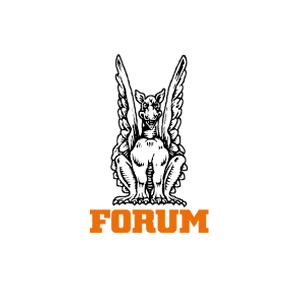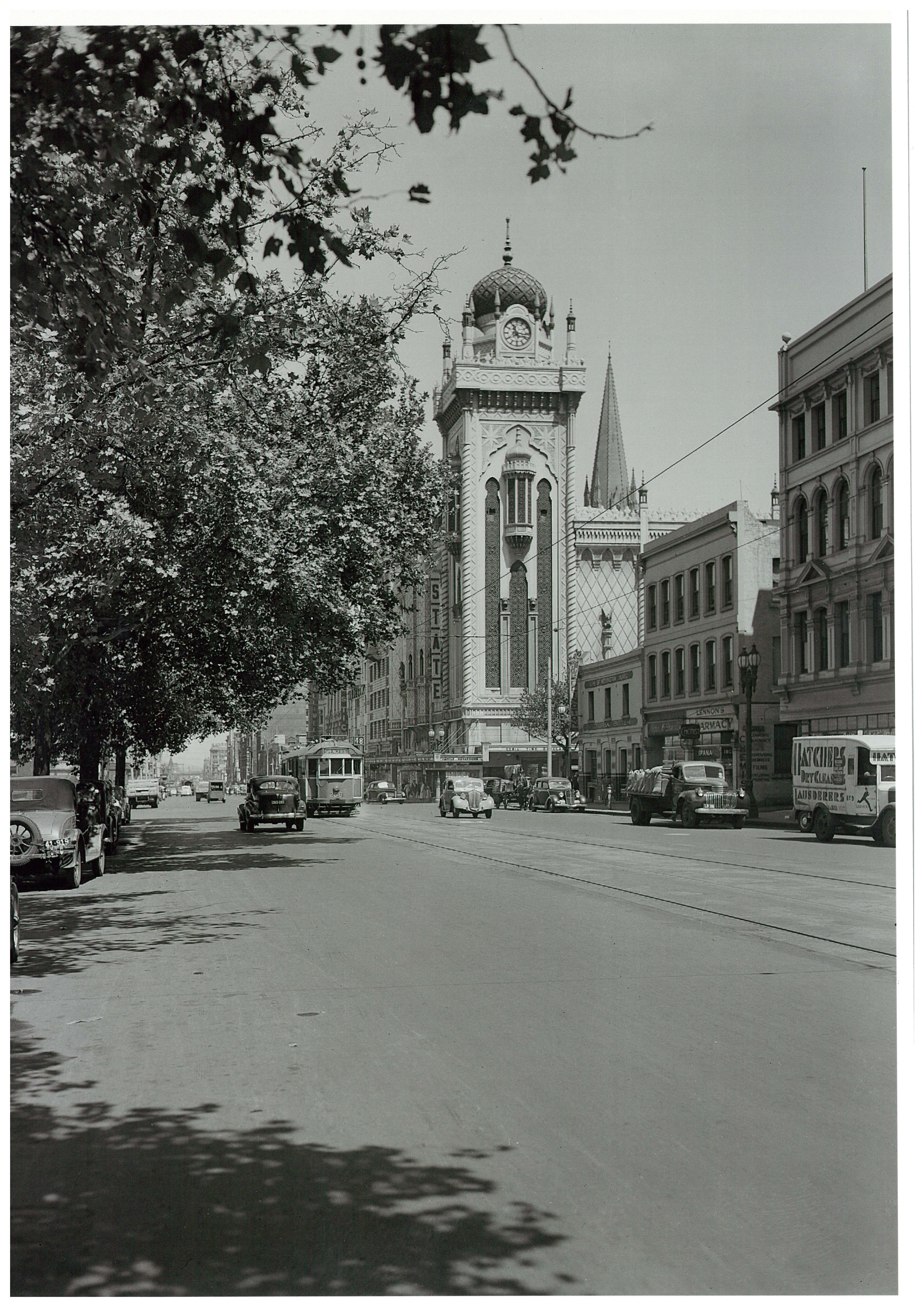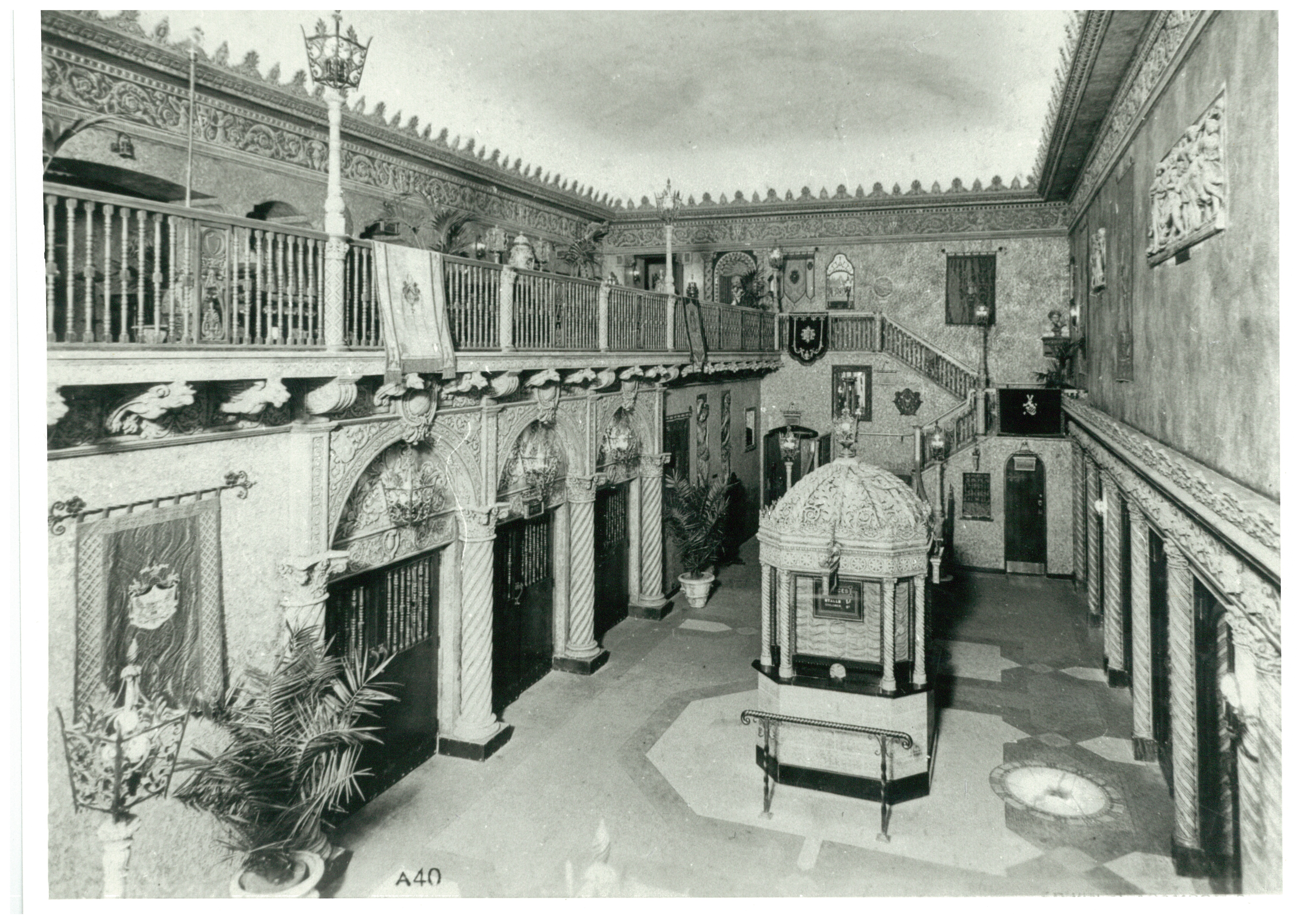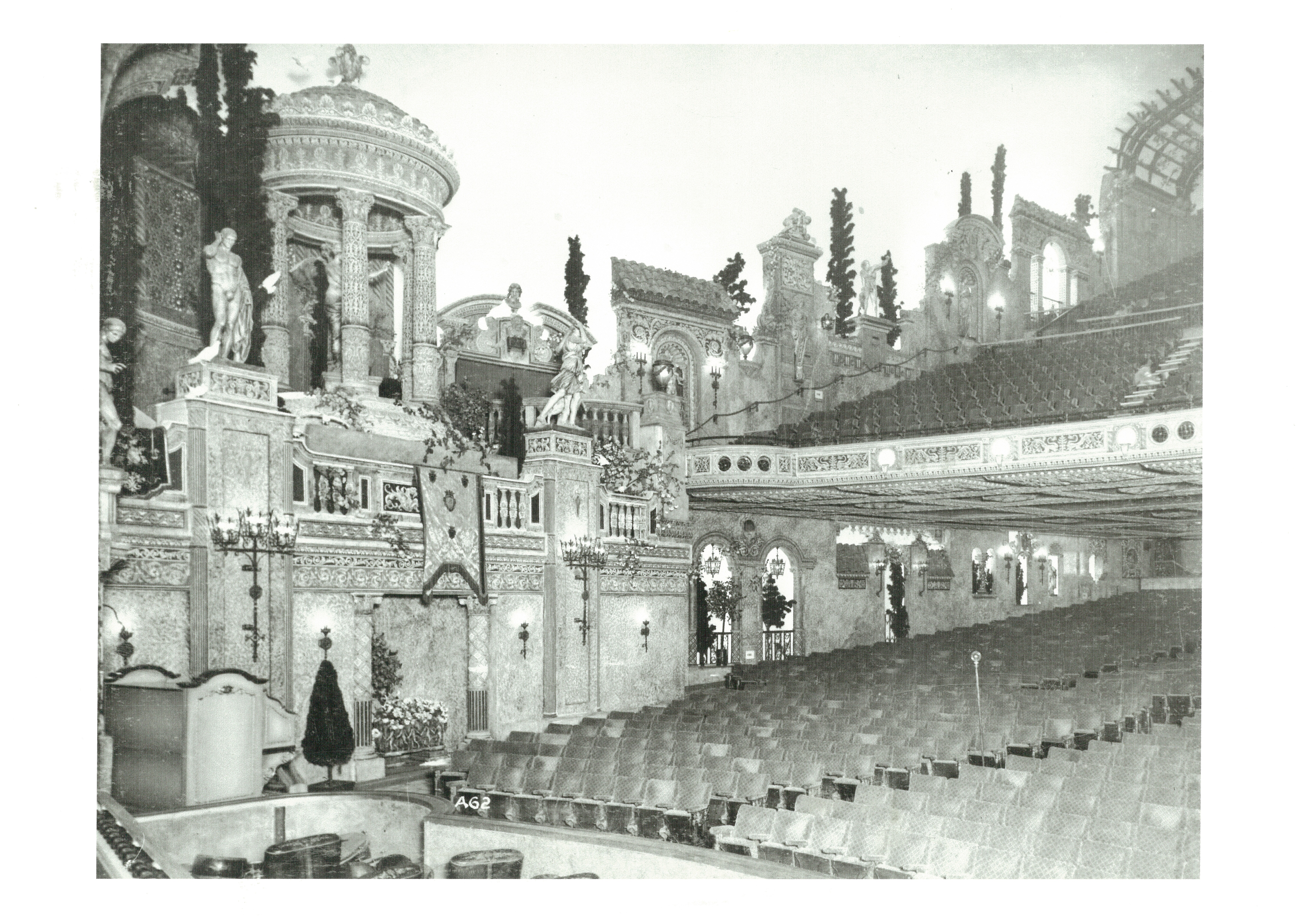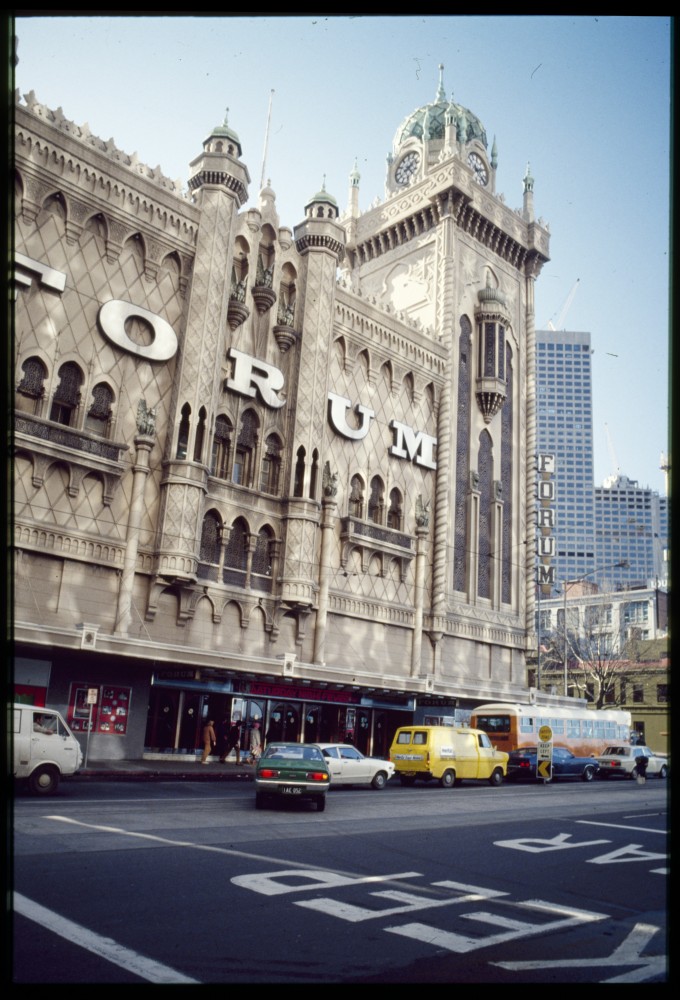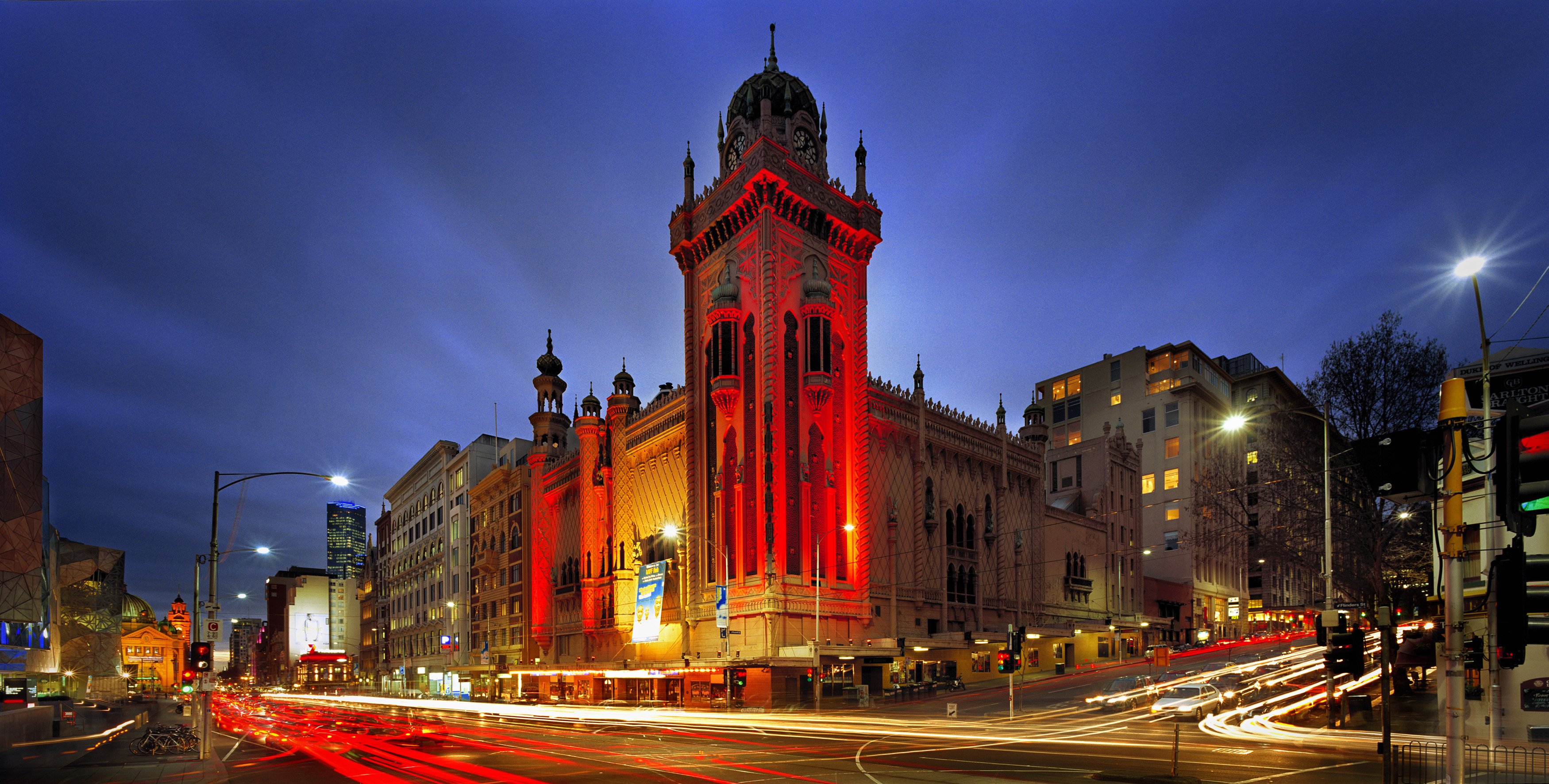Union Theatres competed with Hoyts’ Regent Theatre in Collins Street to be the first to open an extravagant picture palace. The State won the race after seven months’ construction time and opened on 23 February 1929, three weeks ahead of the Regent. A fabulous creation of fantasy both inside and out, it is also one of only a few atmospheric theatres built outside North America.
Opening night was nothing less than spectacular, and presented the silent films The Fleet’s In starring Miss Clara Bow, and The Cameraman starring Buster Keaton. The first ‘talkie’ was The Doctor's Secret, premiering on 6 April 1929. By 1938, the longer theatre hours allowed a feature movie, with an orchestral presentation and a Tivoli stage act.
The State Theatre quickly became a Melbourne landmark. Its iconic copper-domed clock tower rose 49 meters from the street, and was immediately noticed by commuters exiting Flinders Street Station. The grand façade featured a replica minaret of one standing on a Cairo mosque alongside smaller minarets with ornate windows. Together with pressed cement walls, lace-like balustrading, slender columns, receding balconies and towers all painted in bright, bold colours and lit with twinkling lights, the Forum was an imposing, magnificent Melbourne monument.
The grandness of the theatre was immediately apparent as soon as audiences entered the foyer. Patrons’ attention was immediately drawn to the illuminated clock in the centre of the floor, synchronised to the clock tower. Audiences in the 1,372 seat Dress Circle entered through rotundas on either side, while audiences in the 1,999 seat Stalls were overwhelmed by the vast night sky, complete with accurately placed constellations. At 3,371 seats, the Forum featured the largest seating capacity in the southern hemisphere.
By the early 60’s, television had made serious cuts to theatre attendance, so Greater Union decided to convert the State Theatre into two smaller theatres. The walls were brought in, reducing the seating area, and wall decorations were repositioned. The Dress Circle and Stalls were then split into two theatres – the Forum downstairs, and the upstairs Rapallo, for which a new stage was built.
The Forum opened in 1962, and the Rapallo opened in 1963. In November 1978, the building was added to the Historic Buildings Register and came under the protection of the National Trust. In 1981, both theatres were extensively refurbished and opened as Forum I and Forum II.

